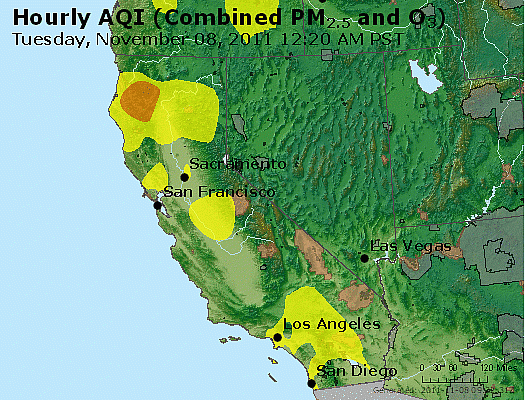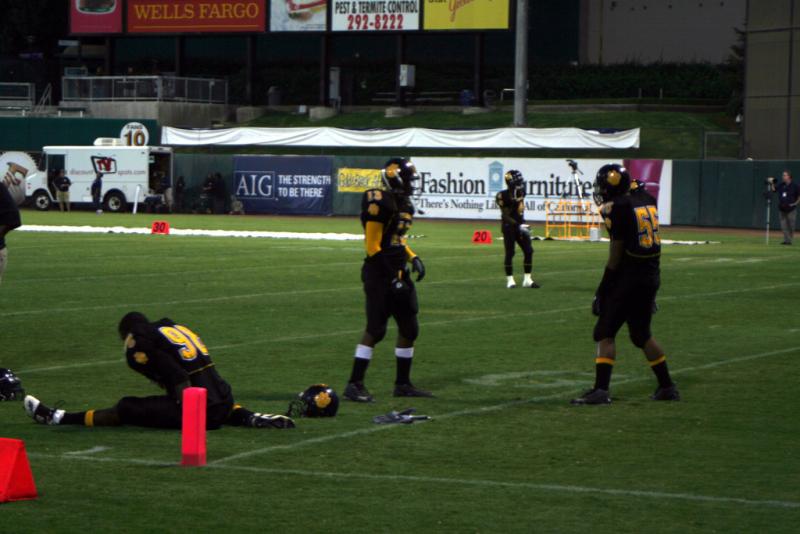Air Pollution, Kids and Asthma: Q&A with KQED Radio Journalist Sasha Khokha

 I had one of those clichéd "driveway moments" listening to Sasha Khokha's recent report from California's polluted Central Valley on how confusing air quality warnings fail to protect residents' health.
I had one of those clichéd "driveway moments" listening to Sasha Khokha's recent report from California's polluted Central Valley on how confusing air quality warnings fail to protect residents' health.
By focusing on families, school sports, and childhood asthma, the Central Valley bureau chief for The California Report/KQED Public Radio turned what could have been a bureaucratic piece about communicating air quality information into a compelling story. And not just compelling – the day after Khokha's story ran, the local air quality agency issued a pollution warning that was much more strongly worded than in the past.
I recently talked with Khokha, a former California Endowment Health Journalism Fellow, about her reporting and her suggestions for reporters interested in covering the health effects of pollution in their own communities. Our conversation has been edited for length and clarity.
How did you come across this story?
We had a period this summer where there were a lot of bad ozone days, and the press releases I was receiving from air district focused on fact that drivers could face penalties if this region doesn't meet EPA standards. As a parent and in talking to other parents, I was confused about what that meant. "Don't idle, don't drive," the press release said, (but) should my kids play outside? I wasn't sure what the health message was. I was curious about that. I began to talk with air quality advocacy organizations and it became clear that other folks were raising the same questions.
How did you plan your reporting? Did you seek out parents to interview first?
It really depended. I was very conscious of days when there was bad air, so on days I got press releases, I called up data from the real time air quality monitoring network. If it got into red or purple zone, I went to the high school to see if it was holding practices and games (which are supposed to be cancelled on bad hair days).
What surprised you during the reporting process?
I was just surprised that parents in the valley, where we have such high rates of asthma, didn't seem to be concerned, even parents whose kids had asthma. They just seemed to feel it was a fact of life of living in the valley. These air quality press releases coming to my inbox as a reporter only focused on how to change activity and driving, not on health impacts.
The real time air quality monitoring network is the most comprehensive air quality network for schools (to use to plan or cancel outdoor activities), but it's confusing and it's not readily available to the public. There are some parents who really do try to find out what air quality is and try to monitor throughout the day (Khokha focused on one of these parents in her story).
Parents do have a tool – it's just that the public messaging is not reflecting that tool. Instead of the newspaper saying we're having poor air quality – here's when it's safe for your kids to play outside, the message we get instead is, "don't drive your car, don't idle your truck."
Different school districts interpret air quality data differently. The Fresno Unified School District public information officer told me they cancel games at certain threshold, but the games were still going on – I was there. Some physical education teachers abide by air quality recommendations and some don't.
A flag warning system at schools projects an average ozone level over 8 hours. But the air quality may be very different hour by hour, and that's the criteria schools use to cancel games. The air district doesn't have authority to make schools cancel games – that's something that is important to further explore.
What were your biggest challenges in reporting this story?
When I talked to parents about their decisions to let their children play outside if air quality is not that good, some got a little defensive, like I was trying to portray them as bad parents. But I was more curious about what kind of information they get and how it affected their decisions.
The air district was very open with me about their public information strategy. I think that after hearing the story, they've acknowledged that there are some improvements that need to be made in how the real time air quality network can be accessed by parents.
When you put together your story, do you do the radio part first and then the written version for the web, or vice versa?
I produce the radio story first, although as I collect sound, I also take pictures and think about the web components we might want to include in a web version of the story.
What has been the reaction to your story?
Listeners, particularly parents of kids with asthma, have been very appreciative of the story.
A scientist at the Air District who worked to develop the Real Time Air Quality Monitoring system sent me a lengthy email expressing concerns that my story didn't talk enough about the District's efforts to develop the Real Time Air Quality Network. He also felt that I was casting the parents in the story in a negative light by interviewing them about the effects of bad air on their children as they watched them play water polo when the air quality was extremely poor. He also said that I should have made it clear that school districts, not air quality regulators, have the authority to cancel sports games.
The air quality warnings issued during recent "Air Alert" episodes here were very focused on how people could reduce driving, NOT on what they could do to protect their lungs, or their child's lungs, from harmful exposure.
The day after my story ran, the air alert issued that day had a very different tone, talking about what children, older adults, and others vulnerable to lung problems could do to protect their health. Coincidence? Perhaps.
But I know that my story is one factor prompting the air district to take a deeper look at how to make their real time air quality monitoring network more accessible to the public and overcome some of the confusion around it.
What suggestions do you have for journalists who want to report similar stories in their communities?
Listen to the folks that you meet in your daily life. What are they talking about at the grocery store, at dinner parties? This story really had its origin in conversations I had with other mothers who didn't know when it was safe for their kids to play outside, or what "bad air days" really mean for their kids' health.
Photo credit: John Martinez Pavliga via Flickr

